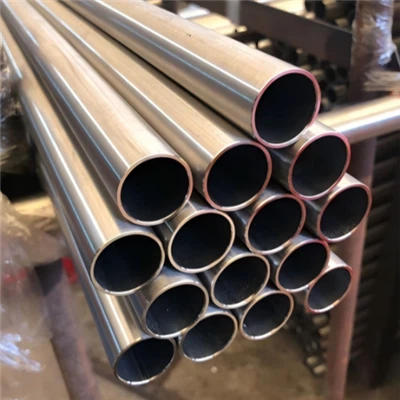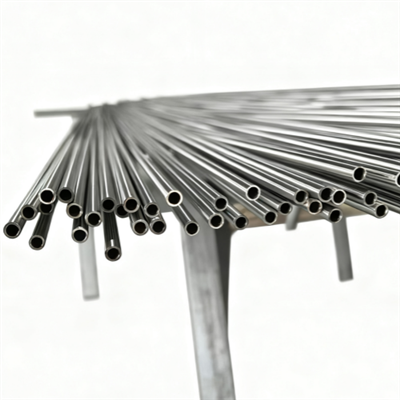Hey there! As a supplier of duplex stainless pipes, I've seen firsthand the importance of safety when working with these materials. Duplex stainless pipes are super popular because they've got this great mix of strength and corrosion resistance. But like with any industrial material, you've gotta take some safety precautions. So, let's dive into what you need to know when working with duplex stainless pipes.
Personal Protective Equipment (PPE)
First things first, PPE is non - negotiable. When you're handling duplex stainless pipes, you're gonna need to gear up properly. Safety glasses are a must. These pipes can be cut, welded, or polished, and during these processes, tiny metal fragments can fly off. One of those in your eye can cause some serious damage, so don't skip on the safety glasses.
Gloves are also essential. Duplex stainless pipes can have sharp edges, especially when they're newly cut. A good pair of work gloves will protect your hands from cuts and abrasions. And if you're doing any welding or high - heat work, you'll need heat - resistant gloves to prevent burns.
For your feet, steel - toed boots are the way to go. You might be moving these heavy pipes around, and if one accidentally drops on your foot, a steel - toed boot can save you from a lot of pain and potential injury.
Handling and Storage
When it comes to moving duplex stainless pipes, you've got to be careful. These pipes can be pretty heavy, so using the right lifting equipment is crucial. Forklifts or cranes are great for moving large quantities of pipes. But make sure the equipment is in good working condition and that the operators are properly trained.
When storing the pipes, keep them in a dry and clean area. Moisture can cause corrosion, even on duplex stainless steel, which is known for its corrosion resistance. Stack the pipes in a stable way to prevent them from toppling over. You don't want a whole pile of pipes crashing down on someone.
Cutting and Machining
Cutting duplex stainless pipes requires some special attention. If you're using a saw, make sure the blade is designed for cutting stainless steel. Using the wrong blade can lead to a poor cut and might even damage the pipe.
During the cutting process, there'll be a lot of dust and debris. So, you need to have proper ventilation. A dust extraction system can help keep the air clean and reduce your exposure to harmful particles.
When it comes to machining, like drilling or threading, use the right tools and cutting fluids. The cutting fluids help to cool the tool and the pipe, reducing friction and preventing overheating. Overheating can change the properties of the duplex stainless steel, making it less strong and more prone to corrosion.
Welding
Welding duplex stainless pipes is a common process, but it's also one that requires a high level of skill and safety measures. First of all, you need to use the right welding consumables. Using the wrong ones can lead to a poor weld quality and might even cause corrosion in the welded area.
Welding produces a lot of heat, light, and fumes. You need to wear a welding helmet with the appropriate shade to protect your eyes from the intense light. And don't forget about respiratory protection. Welding fumes can contain harmful substances like chromium and nickel, which can cause health problems if inhaled over a long period. A good respirator can filter out these harmful particles.
Before you start welding, make sure the pipes are clean. Any dirt, oil, or grease on the surface can affect the quality of the weld. You can use a solvent to clean the pipes before welding.
Avoiding Contamination
Contamination is a big deal when working with duplex stainless pipes. Contact with other metals, especially carbon steel, can cause galvanic corrosion. So, keep your duplex stainless pipes away from carbon steel tools and equipment. If you need to use a tool that's made of carbon steel, make sure it's clean and free of any rust or debris.
Also, be careful when handling the pipes with your bare hands. The oils from your skin can leave a residue on the pipe, which might affect its corrosion resistance. If possible, wear clean gloves when touching the pipes.
Fire and Explosion Prevention
When working with duplex stainless pipes, there's always a risk of fire and explosion, especially during welding or cutting. Make sure there are fire extinguishers nearby and that everyone on the site knows how to use them.
Keep the work area free of flammable materials. Welding sparks can easily ignite things like paper, wood, or oil. And if you're using any gases during the welding process, store them properly and follow all the safety guidelines for handling compressed gases.
Training and Education
Last but not least, proper training and education are key. Everyone who works with duplex stainless pipes should be trained on the safety procedures. This includes how to use the equipment, how to handle the pipes safely, and what to do in case of an emergency.
Regular safety meetings can also help keep everyone informed and aware of the potential hazards. Encourage your workers to report any safety concerns immediately so that they can be addressed right away.
Popular Duplex Stainless Pipe Grades
There are different grades of duplex stainless pipes, and two of the most popular ones are 2507 UNS S32750 S32760 and 2205 UNS S32205 S31803. These grades have different properties and are used in different applications. But no matter which grade you're working with, the safety precautions I've mentioned above still apply.
Conclusion
So, there you have it - all the safety precautions you need to take when working with duplex stainless pipes. Safety should always be your top priority. By following these guidelines, you can ensure a safe working environment for everyone involved.
If you're in the market for high - quality duplex stainless pipes, we're here to help. We've got a wide range of grades and sizes to meet your needs. Don't hesitate to reach out for more information or to start a procurement discussion.


References
- "Stainless Steel Handbook" by ASM International
- Safety guidelines from the Occupational Safety and Health Administration (OSHA)
- Manufacturer's manuals for duplex stainless pipe handling and processing equipment






